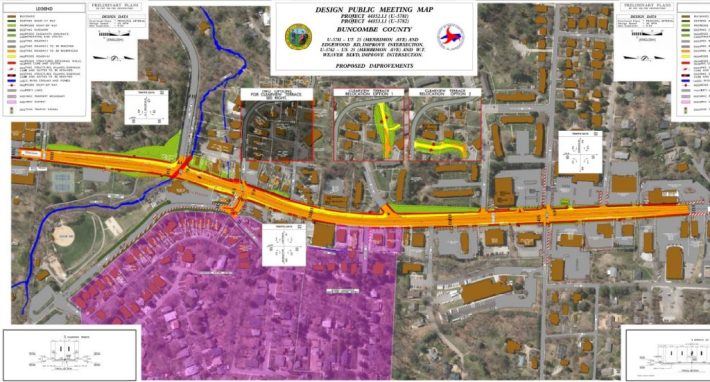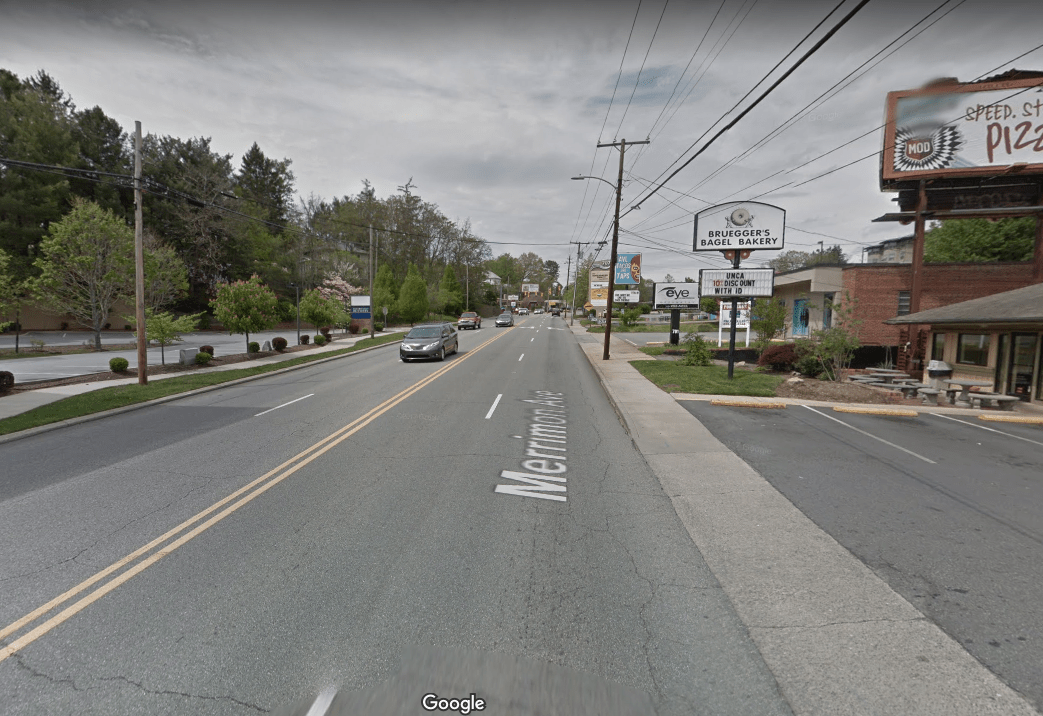Kristie Nichols has never felt safe walking down Merrimon Avenue, a commercial street close to her house in Asheville, North Carolina.
Drivers speed down the four-lane road, roaring uncomfortably close to anyone on foot.
"There’s people that walk and people that run but there’s no buffer between the cars and the sidewalk at all," said the mother of one.
In 2015, a driver struck and killed a woman crossing Merrimon. Residents of Ashville's Five Points neighborhood had warned state officials the intersection was dangerous, to no avail.
Now Nichols is worried the situation will get worse. She and her neighbors were alarmed to learn that the North Carolina Department of Transportation is planning to widen the road to five lanes to add a turn lane.

The impetus for the project isn't exactly clear. With about 21,000 vehicles per day, traffic volumes are the same as a decade ago, according to official counts provided to the Citizen Times. But the four-lane configuration causes a lot of weaving, as drivers heading straight maneuver around drivers making turns.
NCDOT plans to add a sidewalk to a section of the road that lacks them, but by widening the roadway, the project will lead to more dangerous vehicle speeds and make conditions for walking and biking worse. The outer motor vehicle lanes will be 13 feet wide, inviting drivers to hit the gas.
Mike Sule of the group Asheville on Bikes says that's not acceptable, especially since Merrimon Road was singled out for improvements in the city's bike plan, which was paid for by NCDOT. Nor does NCDOT's plan comply with the state's complete streets policy or its purported commitment to "Vision Zero." It would also require the demolition of a few businesses.
Asheville on Bikes is mobilizing against the project. "Rather than working with the city and incorporating existing multi-modal plans, [NCDOT District 13] continues to prioritize maximizing design speed for automobiles and disregard the needs of pedestrians and bicyclists," Sule told Streetsblog in a statement. "Until NCDOT, and its local division, is willing to address community needs and existing city transportation plans, the citizens of Asheville can expect more of the same."
Don Kostelec, a planning consultant who was based in Asheville until recently, says he doesn't understand why NCDOT didn't present the public with a range of options, as required by federal environmental rules.
Instead, the 160 people who attended a meeting held by NCDOT were shown just one plan -- the widening. It didn't go over that well, the Citizen Times reports, with about half the room opposed.

One way to address the weaving issue while improving safety for everyone would be to convert the two center lanes on Merrimon into left-turn lanes while adding bike lanes by the curb. This would separate left turning movements from through traffic, while reducing speeding, giving pedestrians fewer lanes to cross, and creating dedicated space for cycling.
Commonly known as a "road diet," this is a well-understood design solution with a proven track record of improving safety without causing traffic back-ups. Traffic volumes on Merrimon are around the upper limit of what's recommended for road diets.
Previous studies of Merrimon recommended something similar, Kostelec said -- turn lanes at intersections rather than a full widening. NCDOT could try out the road diet for a pittance, since implementation only requires paint, he notes.
Nichols expected Asheville to be more walkable and bikeable when she moved to town a year and a half ago. Her neighborhood, Murdoch-Linden, is full of historic homes. But commercial corridors like Merrimon Road remain inaccessible and dangerous.
"The infrastructure’s really not here, but it could be," Nichols said. "They’re trying to do projects like this that are just going to make it even worse."






